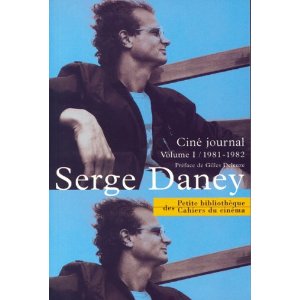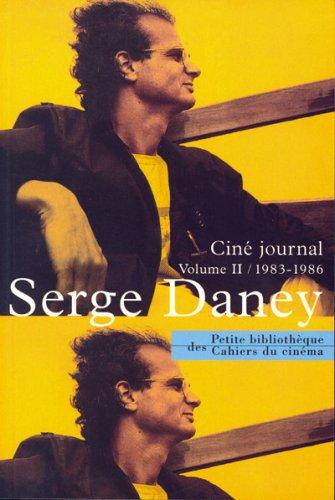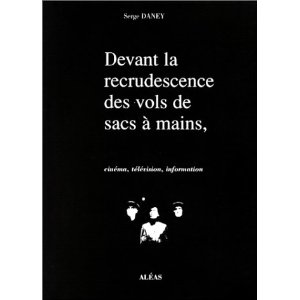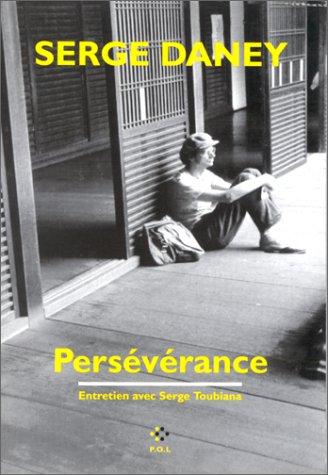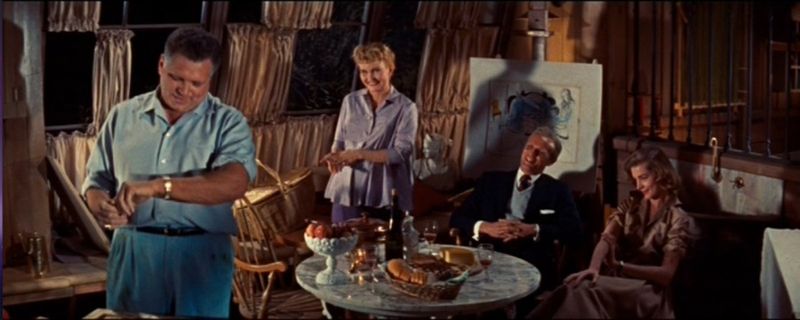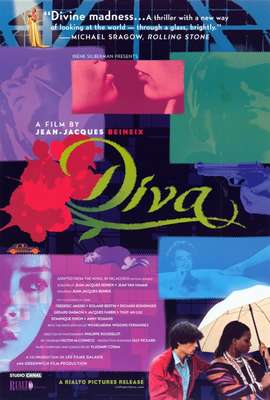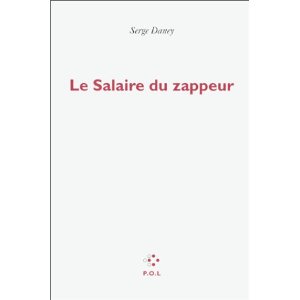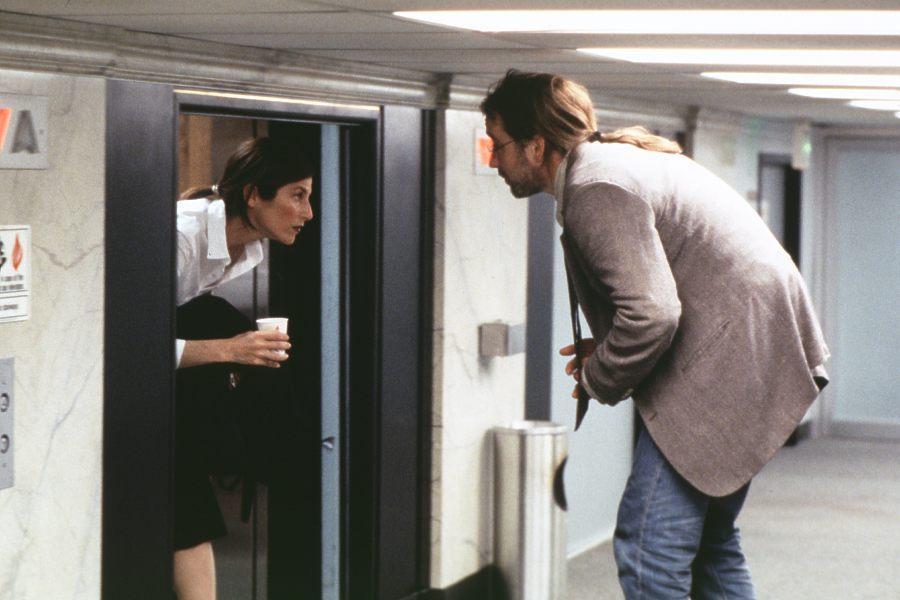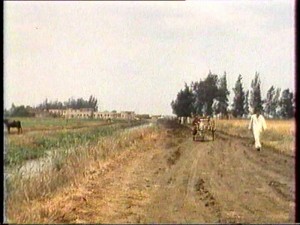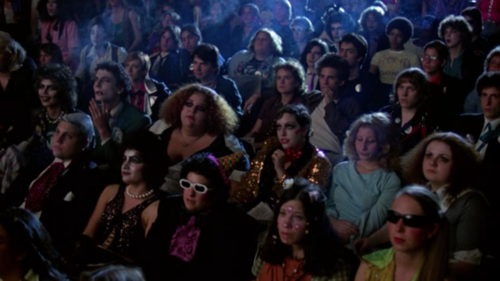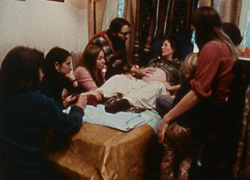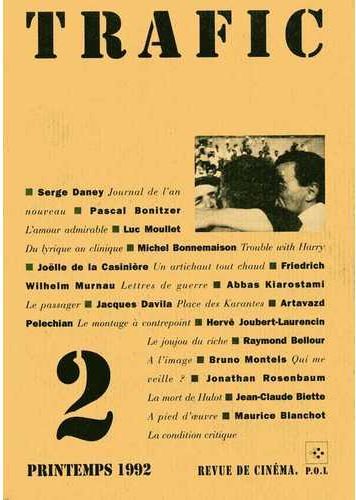Written for and originally published (in French translation) in Trafic no. 37 (printemps 2001); also reprinted in my 2010 collection Goodbye Cinema, Hello Cinephilia. — J.R.
Chicago, November 13, 2000
Dear Jean-Claude, Patrice, Raymond, and Sylvie,
Trying to find a useful way to discuss Serge Daney in an Anglo-American context, it’s hard not to feel a little demoralized. I recently looked up the letter I wrote to a university press editor in early 1995, not very much shorter than this one, enumerating -– to no avail -– all the reasons why bringing out a collection of Serge’s film criticism in English was an urgent matter and a first priority, almost comparable in some ways to what making Bazin available in English had been in the ’60s.
I believe this might have been the longest “reader’s report” I’ve ever written for a publisher. I was trying to persuade the editor to publish a translation of Daney texts that in fact had already been commissioned and completed in England, but, for diverse reasons, had never appeared in print. All the texts chosen came from Ciné journal and Devant la recrudescence des vols de sacs à main. I thought this translation needed some revision to make it more graceful and user-friendly, and I would have preferred a broader selection. (The essays in La rampe, for instance, were completely ignored, as were all the P.O.L. writings.) But I was also careful to insist that even if the manuscript were published exactly as it was, it would automatically constitute an intervention of major importance in American film studies. I even made a special point of citing the “Diderot to Daney” lineage at the end of Godard and Mieville’s 2 X 50 ans du cinéma français (Two Times Fifty Years of French Cinema, 1995) (1) -– naively hoping that this pride of place would somehow make Serge seem more necessary to American film teachers and students rather than more esoteric.
What’s discouraging isn’t simply that I failed to convince this editor, but that we’re even further now than we were from the prospect of having Daney in English -– at least in any proper sense, with a book of his own. Not, I think, for the reason recently suggested to me by an American colleague -– that the time for this project has already passed. After all, the Castellian translation of Persévérance, published by the Argentinian film magazine El Amante, appeared only two years ago. And in the academic world we’re no longer speaking of journalistic time, which is where critics like me and those of El Amante mainly live, but of geological time. (Considering that your first collection in English, Raymond, has only just appeared, I’m sure you know exactly what I mean.) (2) The problem, rather, is that the vested interests of academic film study in America have become still more narrow and entrenched. It’s also worth stressing that from an American perspective, Serge never truly belonged to this world, and to make him a lecturing professor even now might take a bit of doing. The capacity to traverse the discourses of academia and journalism with ease, however common in France and Italy, is much harder to pull off in the English-speaking world, and even though Bazin was a journalist who managed to enter the gates of English-speaking universities, others can’t necessarily expect to follow in his footsteps. Maybe this is because the questions Serge was broaching finally had too much currency and too many political consequences to enter the academy without raising a few hackles.
What questions? The two most obvious ones that come to mind are: films viewed on television screens and world cinema seen from a truly global perspective – two areas in which Serge was an obvious pioneer and in which the U.S. seems woefully behind other large segments of the industrialized world. But I believe the first of these issues remains much more of an obstacle than the second. The sad fact is that in the many hundreds of film courses now being taught in the U.S., films have increasingly been phased out of the curriculum for budgetary as well as practical reasons (failing projectors, tattered prints, the cost of film rentals) to be replaced by videos, laser discs, and DVDs. And in the overwhelming majority of these cases, the videos, laser discs and DVDs are being discussed not as what they actually are but as if they were films. In short, a massive denial is taking place, with all the alienation and confusion that one might expect, so that many of the essential properties of what we’ve been calling cinema for the past hundred years – qualities and directions of light (projected and otherwise), definition, shape, composition, size, and texture, diverse relations between sound and image, conditions of social and communal reception – are now deemed inessential, specialized, even “elitist”.
Knowing that we were living through a transition, Serge took it upon himself to chart some of the material consequences of what it meant to watch a Minnelli musical or melodrama, a Fellini fantasy, a Ford western, a Preminger noir, a Disney cartoon, or even something like Diva (1982), on television, knowing that neither the object nor the spectator was quite the same as before, and that therefore the transactions between the two were undergoing evolutionary changes. Two decades later we’re still living through that transition, still trying to figure out what it means. When I cotaught a course in Chicago three years ago with a video artist, Vanalyne Green, a course called “Film and Video: What’s the Difference?”, essays by Serge on the subject that had been translated into English – including four from Le Salaire du zappeur, in a collection edited by Jacques Kermabon and Kumar Shahani and printed in New Delhi (3) – became an important part of our syllabus. But I also discovered something distressing – something that made our subject relatively inaccessible to younger students, and something that I’m sure applies in other countries today as well: that the degree to which many of the differences between film and video matter a great deal is in part generational.
Does this mean that Daney’s positions are already becoming out of date, or at least relatively specialized? I hope not, because I regard his formulation of the dilemma as a critical prerequisite -– the eye of the needle that has to be passed through before one can pretend to discuss cinema as it exists today, in all its ambiguity. And because American film criticism hasn’t yet learned how to thread that needle, and hasn’t even figured out why it’s important to learn, it’s doomed to remain transcendental in the worst sense, by which I mean immaterial.
On the other hand, maybe it’s the very nature of the American vision to regard materiality as irrelevant, or at least as secondary. In her 1947 essay “America the Beautiful: The Humanist in the Bathtub,” Mary McCarthy wrote, “The strongest argument for the un-materialistic character of American life is the fact that we tolerate conditions that are, from a materialistic point of view, intolerable….Where for a European, a fact is a fact, for us Americans, the real, if it is relevant at all, is simply symbolic appearance.” (4) From this point of view, a small screen on a portable TV can be as much of a silver chalice as a giant screen in a movie house: if it’s only a portal to something else –- a means to an end, like that passageway in Being John Malkovich (1999) -– then the only thing that counts is whether or not you can pass through it. It doesn’t even matter whether you have to walk or crawl.
But I fear I’m being far too negative here. After all but concluding that young American cinephiles couldn’t possibly appreciate what Daney has to offer, I have to come clean and admit that when I looked up “Serge Daney” in a search engine on my computer today, I suddenly found myself staring directly at something called Chronicle of a Passion: the Homepage of Steve Erickson –- where, in addition to many reviews, articles, and interviews by this young New York critic, I also discovered a fairly extensive section of texts by and about Serge in English, practically all of them reproduced from fugitive appearances in American, English, and Australian publications. This includes three early reviews from Cahiers du cinéma in the ’60s, of Chimes at Midnight (1966), The Great Race (1965), and The Family Jewels (1965) (all three criticized as “rather turgid” by Erickson, adding that “the dismal translations don’t make matters better, [but] I’ve included these mostly for completist purposes”); “Sur Salador” and “Le Thérrorisé (pédagogie godardienne)” in the ’70s; an excellent interview with Serge and accompanying article by Bill Krohn commissioned (along with the translation of “Le Thérrorisé”) by Jackie Raynal when she was programming the Bleecker Street Cinema in 1977; texts from the early ’80s on Stalker (1979) and the death of Jean Eustache (both translated wholly or collaboratively by Erickson himself), Too Early, Too Late (translated by me in 1982 for a catalogue accompanying a Straub-Huillet retrospective in New York – the last one to date held in the U.S.), One From the Heart (1982), and “Zoom interdit”; four Libé texts about television from 1987; lamentably, only one text from the ’90s, albeit a crucial one, on Annaud’s L’amant (The Lover, 1992); and finally texts about Daney by Malcolm Imrie (in England) and Adrian Martin (an obituary published in Australia).
I’ve never met Erickson, though he phoned me a few times in Chicago several years ago. What I find so touching about his act of passionate and semiclandestine appropriation is its underlying generosity; in his introduction to the Daney section he reveals that he managed to get ahold of the same unpublished manuscript of Daney in English that I myself read and went to the trouble of copying in 1995 (knowing even then, alas, that the odds of its being published weren’t great), and adds, “If anyone out there would like a copy, please contact me.” In the final analysis, this sotto voce invitation –- almost as if he were offering pornographic postcards to strangers passing on the street – may turn out to be a more authentic way of introducing Daney to American cinephiles than attempting to smuggle him into a classroom. It reminds me of a remark made to me a few years back by Edgardo Cozarinsky, when he compared friends duplicating films on video for one another to medieval monks dutifully copying illuminated manuscripts -– a way of secretly keeping culture alive during the dark ages, passed from hand to hand. Indeed, keeping Daney alive like this no doubt comprises a more lasting and more valuable legacy than trying to force, say, L’Exercice a été profitable, Monsieur into the same universe of discourse -– not to mention the same genre of classroom assignments – as The Classical Hollywood Cinema or Film Art. (If the team of David Bordwell and Kristin Thompson currently constitute a kind of brand name in the U.S., just as Daney does in France, one already begins to see where the problem lies in bringing these two entities together.)
I realize, of course, that this either/or dilemma is a peculiarly American one because of the absolute rift that exists here between journalism and academia, and in most cases between cinema and other academic subjects within universities. This wasn’t always the case: when I was a college student in the ’60s, running the local cine-club at Bard College before film was taught there as an academic subject, one could invite a film critic like Dwight Macdonald to speak on campus and assume that all sorts of people there would be interested. But when I returned to Bard to give a reading from Moving Places (5) in the early ’80s, after a film department was fully established there, I was depressed to discover that no one apart from film students were even informed about my visit.
* * *
For Serge, the fact that he considered the passage between cinema and television as a kind of physical voyage, and one that could even induce jetlag – precisely in the sense that Gilles Deleuze speaks in French of “voyage” (usually translated as “journey”) in his Preface to Ciné journal, as a means of generating optimism as well as pessimism –- made it another part of his itinerary as a world traveler. An essential part, because as Deleuze points out in a by-now familiar formulation, to travel is to verify, to compare, to see:
Your travels, in other words, have left you with mixed feelings. Everywhere, on the one hand, you find the world turning to film, and find that this is the social function of television, its primary function of control – whence your critical pessimism, despair even. You find, on the other hand, that film itself still has endless possibilities, and that this is the ultimate journey, now that all other journeys come down to seeing what’s on TV –- whence your critical optimism (6).
To travel to different parts of the world is also to change one’s image of that world, and Daney’s early forays to Asia, the Middle East, India, and North Africa were path-clearing ventures that ultimately provided some of the West’s initial routes towards the cinemas of those regions. “World cinema” as it was known during the postwar period and then during the nouvelle vague was a very different entity from what we know it to be today, not only because certain nationalities and ethnicities have subsequently been coaxed out of hiding but because nationality itself is beginning to mean something different. In this case, I would stress that the lagging behind of America, while still a problem, is not nearly as serious as it was a few years ago. For all the isolationism that continues to rule our media, the dawning recognition of figures like Hou and Kiarostami is finally taking place, and, yes, the world has gotten even smaller since the ’80s, the period I regard as the Daney decade.
One reason why it’s gotten smaller is the huge multinational corporations that have begun to displace or at the very least dominate the national governments –- the “brands,” as they’re often called. This has unified the globe in two diametrically opposed ways: by making McDonald’s hamburgers, Nike sneakers, Coca-cola, and Disney animated features seemingly omnipresent, and by creating a significant counterforce –- destructive dreams and plots of resistance to these and comparable brands that are no less universal, even if they’re generally, at least so far, much less evident.
Perhaps this counterforce is still mainly a matter of potentiality rather than one of active power (a way of dreaming about the Internet); but I’m also beginning to realise that the brands have a vested interest in minimizing whatever threatens them, and that significant political gains have in fact already been made. Last August, while reviewing an independent American video documentary that was premiering in Chicago, Rustin Thompson’s 30 Frames a Second: The WTO in Seattle, I was also reading an interesting book about the same global movement, Naomi Klein’s No Logo: Taking Aim at the Brand Bullies (7). The video was made by an American TV news cameraman and film critic who is nostalgic enough about the ’60s to include video clips from both Haskell Wexler’s Medium Cool (1969) and Godard’s Le Petit Soldat (1960). (The latter even inspired the first part of Thompson’s title; if film, for Godard, was the truth 24 frames a second, video is the truth 30 frames a second -– although, as Thompson fully realizes, given his own acknowledged subjectivity, six additional frames per second don’t amount to any additional truth.) He was apparently politicized in December 1999 by demonstrations against the World Trade Organization in Seattle, yet he saw these events as essentially American -– populist proof that his fellow citizens weren’t as politically apathetic as he had previously assumed, thereby inspiring him to include a third clip, from the final scene of Ford’s The Grapes of Wrath (1940), about the survival and resilience of The People. In short, one might say that because Thompson comes from a big country – big in the sense that China and Russia are also big – he becomes lost inside its boundaries, and practically everything he sees becomes translated into national events and groupings. And the same thing has been happening since the Presidential election a week ago, when both the innocence of Americans and the appalling lack of meaningful choices have suddenly become a comic spectacle for the rest of the world. (While many of my friends have been calling the ambiguous and tortured election results a “worst case scenario,” I’ve been entertaining the notion that it may at least temporarily function as a “best case scenario” -– at least if one views these results as a kind of protracted deconstruction of American electoral politics, and surmises that from a global standpoint, a petrified America might possibly yield a safer and healthier planet.)
In contrast to Thompson’s video, the book is by a Canadian who sees the movement against the brands as global first and last, as global as the brands themselves. Consequently, even though Klein’s book appeared in 1999 and therefore omits the December demonstrations in Seattle, she has much more to say about them than the video, starting with the fact that two days prior to the 50th anniversary of the WTO in Geneva, in May 1998, an international movement called Reclaim the Streets successfully staged thirty events in twenty countries -– a “Global Street Party” involving “Indian farmers, landless Brazilian peasants, unemployed French, Italian, and German workers and international human-rights groups” and ranging from 800 people dancing on a six-lane highway in Utrecht to even larger bashes in Prague, Sydney, Berkeley, and Birmingham –- although these were “rarely reported as more than isolated traffic snares” in the press. (Klein also devotes one chapter to substantial victories in the campaigns against Nike, Shell, and McDonald’s -– convincing Nike to eliminate its sweatshops in Burma, for instance – which I hadn’t heard about on the evening news, either.) For the average American – myself included, at least before I read No Logo -– the global movement of May 1998 took place exclusively in backwaters whereas the one in December 1999 was supposedly a “world-class” event by virtue of converging in Seattle. But if the world consists mainly of backwaters -– which is certainly one of the main impressions one carries away from the films of Dreyer, Godard after he left Paris, Hawks, Hou, Kiarostami, Kramer, Kurosawa, McCarey, Mizoguchi, Paradjanov, Pialat, Rocha, Sembene, Straub-Huillet, Tarkovsky, and van der Keuken, among other Daney favorites –- then it has to be Seattle (or Paris, or New York, or Chicago) that’s relatively slow in catching up. I believe Serge was one of the first film critics who had a dawning awareness of this fact –- an awareness made especially evident through his choices of what films were the most important, and one even dramatized by the photograph of him on the cover of Persévérance (8).
I’m not sure if this global flexibility was always the case with Serge, even if he traveled to the U.S. as early as 1964 (with Louis Skorecki, to interview Hawks, McCarey, Tourneur, Lewis, Sternberg, and Keaton), the same year he started writing for Cahiers du cinéma. In fact, I have to confess that the period in his career that I still find most difficult to use today is during the following decade, when his focus became more parochial: the Maoist era of the Cahiers and its immediate aftermath, part of which has recently (and paradoxically) been commemorated in English by the belated publication of the fourth and (avowedly) last volume of essays translated from that magazine (9). Here indeed is still more Daney in English – perhaps most notably “The aquarium,” his reflections on Robert Kramer and John Douglas’ Milestones (1975). And notwithstanding the extremely prohibitive price of this volume (about a hundred dollars!) that makes it highly unlikely for classroom adoption, there’s an undeniable logic in commencing the project of publishing Daney in English between hardcovers with portions of the first decade of his collected work in French. (It was towards the end of that decade that Jackie Raynal first introduced Serge and me to one another in New York, shortly before he invited me to become the New York correspondent for the Cahiers. My first true act in that endeavor undoubtedly remained the most important, for him as well as for me: introducing him to the euphoria and what Barthes might have called the “circulation” of the Rocky Horror Picture Show cult one Saturday night at the 8th Street Playhouse.) (10)
Still, I remain somewhat stumped about what Americans and English students can do with many of these mid-’70s texts a quarter of a century later -– such as a roundtable discussion and then an essay critiquing that same discussion about an American film (Milestones again) that remains almost completely unknown today outside of France: unavailable and undistributed on film and on video alike in both the U.S. and the U.K. Perhaps the neglect is unjust and maybe the publication of this book can help change this situation, but without wanting to sound at all cynical or cavalier about this, I’m not holding my breath. I have only the vaguest recollection of having seen the film at the London Film Festival in 1975, and rightly or wrongly, remember it now only as an early harbinger of a certain new age sensibility that would eventually overtake the American counterculture. In contrast to Ice, Kramer’s 1969 film – which I saw years earlier in Paris and which for me captured the neurosis and paranoia of the American radical left with disturbing accuracy and indelible brilliance (for which it was mainly scorned in New York) – Milestones continues to fascinate me almost exclusively as a site of French contemplation.
Admittedly, I used to feel the same way about Lang’s two Indian films, which are now particular favorites of mine (albeit equally unavailable in the U.S. and U.K.), so I hope I’m not being short-sighted in assuming today that Milestones probably has fewer secrets to divulge, at least to me. Here is where I begin to understand what makes Serge more difficult to “translate” than Bazin, beyond a specific French and European context. Even though I’ve always loved Moonfleet (1955), ever since it came out – unlike Der Tiger von Eschnapur (1959) and Das indische Grabmal (1959), which I could only see in Paris and in a dubbed version française prior to the late ’70s -– I can’t begin to imagine how one could translate the title of L’Exercice a été profitable, Monsieur into a context that would make much sense to American cinephiles except as an exotic emblem of French cinephilia. Even starting with the English line spoken in the Lang film by Stewart Granger -– “The exercise was beneficial” -– would get one nowhere.
Yet at the same time, I must confess that my own fascination with Jacques Rivette’s Out 1 (1970/89) as a statement about the French counterculture, and my consternation that French criticism has almost completely ignored it, corresponds closely to my dismay about the privileged treatment accorded by Serge and his friends towards Milestones, and perhaps their own dismay that Americans including me tended to recoil from it. (In a more postpolitical context, I can recall Serge openly acknowledging to me and to Bill Krohn on separate occasions the injustice of the Cahiers siding with the status quo and refusing to cope with the challenges offered by Rivette’s subsequent Duelle [1976] and Noroît [1976] -– a refusal accompanied by some feeling of embarrassment, as if those two films had both undertaken certain unsuccessful acts of psychoanalysis.)
In fact, the reasons why France (including Serge) was in denial about Out 1 and why the U.S. (including me) was in denial about Milestones may have been almost the same – along with the reasons why a certain kind of otherness inflected with sameness can convert a certain kind of foreign film into a good object worthy of extended study. I suspect that what we both truly needed in relation to our leftism in the ’70s was a site of mourning, and a close look at our own countries in relation to this grief might have simply been too debilitating. (Perhaps the Paris he knew became a fit subject for analysis again only after it had become sufficiently depoliticized -– past the point of negation, as in Eustache’s La Maman et la putain [1973].) Looking too directly at political failure was too apt to turn us both into pillars of salt, so we took detours through each other’s countries and vernaculars in order to approach “the awful truth,” to cite it in terms of the McCarey title. And, based on my few encounters with Kramer, when he expressed his frustration about being virtually invisible in the States, it was a dilemma that no doubt tormented him more than anyone. (For me, the most beautiful thing about “L’aquarium” is the spirit of an endless quest, bordering on the Proustian: “What holds the tribe together? What does it consist of? A glob of spittle, one might say.”) (11)
* * *
Another reason why the planet has been shrinking is a vision of exchange and circulation that Serge already recognized around him and helped to foster in others, a vision embodied in the very name of Trafic. It’s fascinating to me how that vision, when it was still only a spark at the end of Serge’s cigar -– a concept for a film magazine first described to me at some point during the ’80s, in the cafe of the Hilton lobby in Rotterdam – was perceived from the outset as international, yet also French: a very special combination. In contrast to the internationalism that is also American, which resembles the brands whether it wants to or not, the internationalism of Serge -– like that of Tati, one of his great loves and reference points -– was already apparent in the franglais of the title of his magazine. But the full significance of the Frenchness wasn’t clear to me until a few years later, in late 1991, when I held the first issue in my hands and discovered something that it hadn’t occurred to Serge to tell me: that Trafic was also a literary magazine. That’s why I found, among other things, an opening quote from Ezra Pound, a journal kept by Serge, a poem by Godard, personal reflections from Monteiro and Kramer, one letter from Rossellini and another from Bill Krohn. So that by the time I became a contributor myself in the second issue, it seemed perfectly natural, even logical, for me to be comparing Playtime (1967) to Ulysses.
Perfectly natural in Trafic, but hardly anywhere else. This perhaps explains why, years later, when I came to revise and update an essay from Trafic about Histoire(s) du cinéma for Film Comment (12), I felt it necessary to suppress nearly all of the references to Finnegans Wake. And for similar reasons, when I recently included some of my Trafic texts about film festivals in a polemical book of mine that is coming out in the U.S. this week (13), my editor insisted on cutting these texts substantially, simply in order to reduce the number of filmmakers and films that he’s never heard of. For I take it that part of any literary project worth its salt is an acknowledgement of a certain ignorance, a sense of potential knowledge that always and necessarily exceeds one’s grasp (which for me is central to the mystery and beauty of Faulkner, for instance, or Proust, or Wuthering Heights), whereas the sine qua non of film criticism in the U.S. is its utter reliance on the consumption model: if you can’t already see a film, you’re much better off not knowing that it exists. I would argue, in fact, that this is what prevents my country from being truly global in outlook as well as truly literary, the problem with the Thompson video: an excessive absorption in the local that has currently lodged itself in the Florida polls. Didn’t Serge rightly point out, in one of his last TV interviews, that Marshall McLuhan’s ’60s description of television as a “global village” was still valid -– but only if one placed the emphasis on “village”? (In the case of film criticism, this also usually means attending only to either academic or journalistic writing while ignoring the other – the major reason, I think, why we still don’t have a volume of Daney in English: because he’s too academic for mainstream publishing and too literary for academic publishing. The fact that he’s interested in cinema and television, art and the Gulf War, already makes him too interdisciplinary for easy classification and marketing.)
For this notion of cinema as an extension of literary discourse –- already fundamental to Alexandre Astruc’s caméra-stylo, and elaborated still further in the nouvelle vague, initially by Alain Resnais’ choice of screenwriters and the fact that most of his younger colleagues were writers themselves -– has actually been an implicit theme of French cinephilia from the beginning, already present in Louis Delluc and Jean Epstein: a notion, finally, that the cinema is literature by different means, but literature none the less. Hence the importance of film criticism, which Godard realized from early on was just another way of “making cinema”; and the means by which words become coextensive with sounds and images becomes one of the first essential steps towards realizing with the Lettrists that words are both sounds and images. Writing about Finnegans Wake in 1939, shortly after it was published, William Troy had the perspicacity to point out that “a word, in the terminology of modern physics, is a time-space event. It is not too much to say that for the poet no word in a language is ever used twice exactly in the same way.” (14) No word, no sound, and no image; and the coming together of all three in a united yet disparate poetic front might be said to equal Godard’s most basic film aesthetic.
For Serge, I suspect, this wasn’t so much a part of any conscious program as it was part of the air he breathed. That’s why Trafic, which he knew from fairly early on would be his final resting place -– Le Tombeau de Serge, one might call it, thinking of Marker (15) – immediately became a literary magazine not so much methodically as instinctively, indirectly, and altogether naturally, a product of accumulated wisdom more than deliberation. Sylvie, I’m reminded of your lecture about Serge in Rotterdam in 1993 – the first annual “Serge Daney Lecture” at that festival, when you and Robert Kramer both spoke. You addressed the “coherence” of Serge’s “liberation” –- “the liberation to be oneself, to be receptive to the voice of others” – linking together “the three different periods of Serge’s critical work -– the Cahiers du cinéma period (20 years), Libération (10 years), and Trafic (only one year, although he’d been preparing Trafic for five).” (I should add that these latter quotations are drawn from yet another small publication of texts by and about Serge in English, issued by the Rotterdam Festival. So each time I think I’ve offered a nearly exhaustive inventory of how much -– or how little -– Serge has been allowed to function in my language, another exception immediately rises to the surface.)
This finally, must be what Godard is referring to in the “Diderot to Daney” lineage -– literature as liberation, cinema as discourse -– and why, alas, my own citation of this tradition in my reader’s report five years ago couldn’t establish a clear place for Serge in American film studies, much less American literature. Maybe this is partly because Trafic functions for me as Out 1 has -– and as portions of the American cinema function for you, much as they functioned for Serge: as a form of global circulation, a way of being in the world by remaining in motion. In these terms, what matters most about Kiarostami may not have much to do with being Iranian -– and what matters most about Serge and Trafic may have little to do with being French. That all three are literary may count for much more – at least in the online global village we inhabit, with the emphasis firmly on “global”.
Faithfully and affectionately,
Jonathan
Endnotes (by Adrian Martin, added for subsequent online publication in English in Senses of Cinema no. 13):
- The title on the video itself is Deux fois cinquante ans de cinema français, subtitled as Twice Fifty Years of French Cinema. However the ‘phrase book’ of this work prepared by Godard and published by P.O.L. in 1998 is called 2 X 50 ans de cinéma français.
- Rosenbaum is here alluding to the publication of Raymond Bellour’s The Analysis of Film (Bloomington and Indiana: Indiana University Press, 2000), an edited and translated version of his L’Analyse du film (Paris: Editions Albatros, 1979).
- Jacques Kermabon and Kumar Shahani (eds), Cinema and Television: Fifty Years of Reflection in France (London: Sangam Books, 1991).
- Mary McCarthy, On the Contrary: Articles of Belief, 1946-1961 (New York: Noonday Press), pp. 12-13. This essay originally appeared in Commentary, September 1947.
- Rosenbaum, Moving Places: A Life at the Movies (Berkeley: University of California Press, 1995).
- Gilles Deleuze, “Letter to Serge Daney: Optimism, Pessimism, and Travel”, Negotiations: 1972-1990 (New York: Columbia University Press, 1995), trans. Martin Joughin, p. 78.
- Naomi Klein, No Logo: Taking Aim at the Brand Bullies (New York: Picador, 1999).
- The cover image by Françoise Huguier, stretching over the front and back jackets, is of “Serge Daney in Japan”, showing him at rest while a local child plays nearby.
- Cahiers du Cinéma, Volume Four, 1973-1978: History, Ideology, Cultural Struggle, edited by David Wilson (London and New York: Routledge, 2000).
- Rosenbaum, “Lettre des U.S.A.”, Cahiers du cinéma no. 307, January 1980; English language version in Sight and Sound, Spring 1980.
- Daney, “The Acquarium (Milestones)”, Cahiers du Cinéma, Volume Four, trans. David Wilson, p. 155.
- Rosenbaum, “Godard in the Nineties: An Interview, Argument, and Scrapbook”, Film Comment, Vol. 34 No. 5, September/October 1998, pp. 52-63.
- Movie Wars: How Hollywood and the Media Conspire to Limit What Films We Can See (Chicago: a cappella books, 2000).
- William Troy, “Notes on Finnegans Wake” [1939], in Selected Essays (New Brunswick, NJ: Rutgers University Press, 1967), p. 97.
- The allusion is to the French title of Chris Marker’s video essay about Alexander Medvedkin, The Last Bolshevik (1993): Le Tombeau d’Alexandre (“Alexander’s Tomb”).

